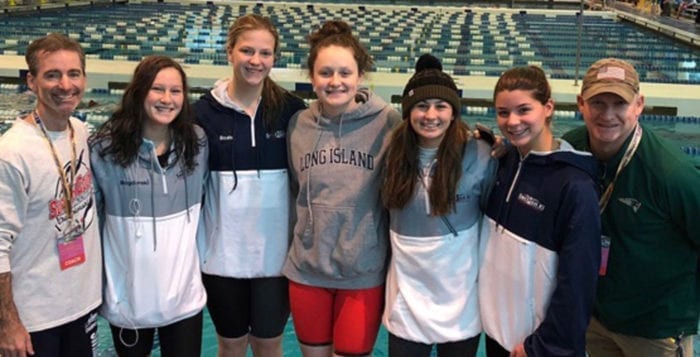By David Luces
More than a week after New York State Gov. Andrew Cuomo (D) released his proposed budget for the 2019-20 fiscal year, many municipalities both big and small in Suffolk County may have to face the reality of losing state funding.
This comes as a result of the governor’s decision to end state funding to Suffolk County towns and villages as part of a program called Aid and Incentives for Municipalities, which was originally established in the state’s 2005-06 fiscal year.
If the budget passes, 41 towns and villages in Suffolk County stand to lose AIM funding. Those local governments that rely on AIM funding for more than 2 percent of their budgets would keep this aid.
“It’s as if the governor has decided to aim a dagger at the heart of every municipality on Long Island,” Town of Brookhaven Supervisor Ed Romaine (R) said.
“It’s as if the governor has decided to aim a dagger at the heart of every municipality on Long Island.”
— Ed Romaine
The Town of Brookhaven stands to lose $1.8 million, which is the second highest loss in funding behind the Town of Hempstead which is set to lose $3.8 million.
Romaine said the decision to cut aid for Brookhaven taxpayers is unconscionable and that it will have an immediate and serious impact on town services and could result in a tax increase.
Other townships along the North Shore are also standing on the cliff’s edge of funding loss. Huntington Town Supervisor Chad Lupinacci (R) said in a statement that he is disappointed to learn of what he called an unprecedented $59 million in total cuts Cuomo has proposed in his 2020 NYS budget, including little more than $1 million in AIM funds for Huntington.
“[This is] effectively gutting the unrestricted state revenue sharing program and significantly affecting the Long Island region,” the town supervisor said. “I urge our state Legislature to reject the governor’s dangerous proposal, which could translate into service and program cuts and layoffs.”
The Huntington supervisor added the town should not be punished because of what he described as its conservative fiscal practices, which have resulted in a state funding stream that represents less than 2 percent of the town’s budget.
“When you take over $1 million away from us, the money has to come from somewhere,” he said.
Over in the Town of Smithtown, which stands to lose more than $650,000 in AIM funds, officials are staying wary of the timetables, especially considering that many municipalities calculate the AIM funds into their regular yearly budgets.
“We’ve heard about it, though it’s not official yet — there’s a distinct possible that it could happen,” said Town of Smithtown Supervisor Ed Wehrheim (R).
“When you take over $1 million away from us, the money has to come from somewhere.”
—Chad Lupinacci
Town officials expressed that the governor should give them and other municipalities more time to prepare for the proposed budget cuts.
Werheim said the town already has completed its budget and if the money is lost it would put a hole in their operating budget, forcing them to allocate funds from somewhere else.
If the governor’s plan goes into effect, programs like Horizons Counseling & Education could lose funding, officials said. The program is funded to provide adolescent and adult treatment, prevention and education services for drug- and alcohol-related problems.
“I’d ask [the governor] to reconsider other avenues,” Werheim said. “Many municipalities on Long Island depend and rely on federal funding.”
Many incorporated villages along the North Shore are also looking at a funding loss, such as the Village of Northport which is expected to lose $50,000. Others villages like Poquott would lose $2,500, Belle Terre $4,100 and Old Field $3,500.
“I do not yet know how this is going to impact the village,” Old Field Mayor Michael Levine said.
The Village of Port Jefferson would lose $33,000 of AIM funding.
“If that goes through it means losing another budget revenue line,” Mayor Margot Garant said. “As this stuff starts to pile up, it really starts to hurt.”
Garant mentioned that the lobbying group New York Conference of Mayors and Municipal Officials, which represents mayors and small municipalities across New York, will be pushing back against this line in the budget come February.
Other groups like Suffolk County Village Officials Association will also work with NYCOM and Suffolk legislators to lobby Suffolk’s representatives in Albany about the dire consequences of this aspect of the governor’s budget proposal.
“As this stuff starts to pile up, it really starts to hurt.”
— Margot Garant
“The governor’s proposal hurts the village citizens the most in villages that have the largest budgetary needs,” said Richard Smith, president of SCVOA. “The governor continues to add to village responsibilities and costs, but simultaneously wants to force villages to increase their local property taxes to pay for the same village services as were provided last year.”
While schools are gearing up to present next year’s budgets, some districts on Long Island would also see less state aid if the governor’s proposed budget passes. Shoreham-Wading River School District would see an incremental increase in foundation aid of $16,000 but a fall in expense-driven aids resulting in a net decrease of $77,000 in state aid. Superintendent Gerard Poole said the district expects to advocate for more funds.
“Last year, as a result of our advocacy and the support of our local legislators, our final foundation aid allocation was about $100,000 higher than what the executive budget originally proposed,” Poole said. “It is also important to note that an additional aid category, building aid, which was not included in recent media reports is in fact projected to increase for our district next year due to the completion of capital projects.”
The New York State Senate Finance and Assembly Ways and Means committees must review the proposed budget before the state Legislature acts on the appropriation bills. Town officials and others said they will continue to advocate for more aid for their districts.
































































